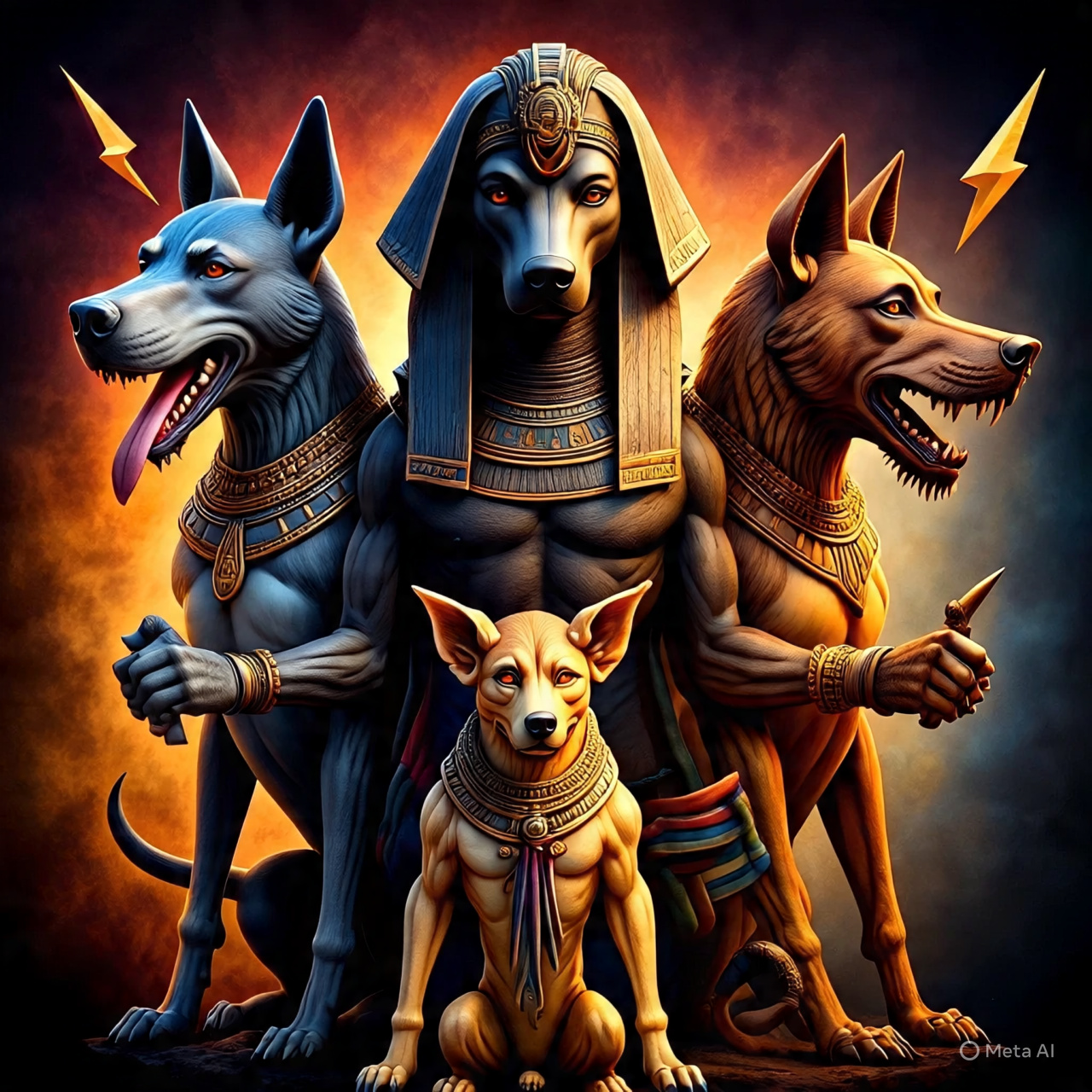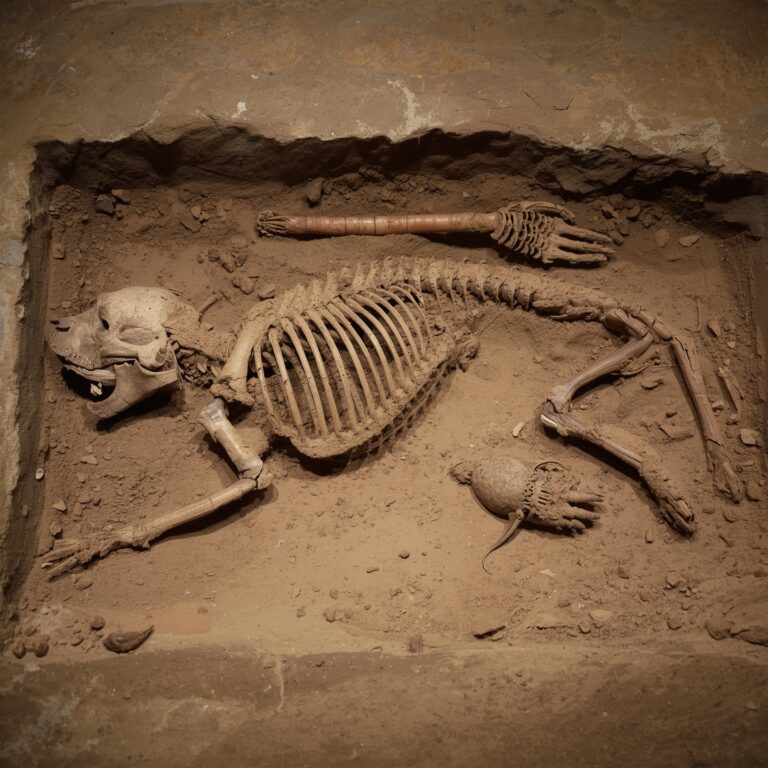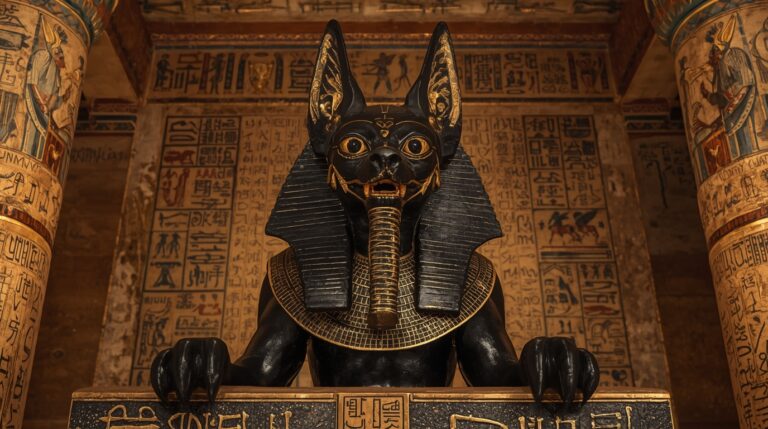Symbolism of Dogs in Ancient Cultures

Introduction: The Universal Symbolism of Dogs
Across virtually all ancient civilizations, dogs held unique symbolic roles that transcended their function as companions or hunters. As one of the first domesticated animals—dating back over 15,000 years—dogs became embedded in the spiritual, ritualistic, and mythological frameworks of societies from Egypt to Mesoamerica.
They were seen not just as animals but as spiritual guardians, divine messengers, and soul guides in the afterlife. This article explores how ancient cultures across continents revered dogs, embedding them deeply in myth, religion, and symbolic systems.
The Role of Dogs in Myth and Religion
Dogs in ancient symbolism often occupied liminal spaces—between life and death, human and divine, known and unknown. Their night vision, keen senses, and protective loyalty made them ideal symbols for spiritual guardianship.
Whether guarding tombs, guiding souls through the underworld, or standing beside deities, dogs were persistently tied to death, rebirth, and divine presence.
Dogs in Ancient Egypt
In Ancient Egypt, dogs were revered through the god Anubis, the jackal-headed deity responsible for embalming, mummification, and judging souls in the afterlife.
- Anubis was considered a psychopomp, guiding souls through the Duat, or underworld.
- Archaeologists have discovered mummified dogs and dog cemeteries, especially in Saqqara, where temples were dedicated to Anubis.
- The Egyptian association of dogs with protection and the afterlife is among the most enduring symbolic interpretations.
Dogs in Greek Mythology
The Greeks depicted dogs as protectors of sacred spaces and gatekeepers of the underworld.
- The three-headed dog Cerberus guarded the gates of Hades, ensuring that no soul escaped.
- The goddess Hecate, associated with witchcraft and the moon, was often accompanied by black dogs, signaling her role in magic and the crossroads.
- Dogs in Greek lore were considered symbols of transition, spiritual defense, and death vigilance.
Dogs in Norse Mythology
In Norse mythology, the dog Garmr guards the realm of the dead—Helheim.
- Like Cerberus, Garmr is a guardian of thresholds, destined to break loose during Ragnarok.
- Dogs also featured in Viking burial sites, often buried beside warriors or chieftains, symbolizing loyalty and spiritual guardianship.
Dogs in Ancient Mesopotamia
The Sumerians and Akkadians honored dogs in association with the healing goddess Bau.
- Her temples often featured dog figurines, believed to hold protective and healing powers.
- Mesopotamian ritual texts describe dogs as both pest-control agents and sacrificial guardians, indicating their duality in symbolism.
Dogs in Aztec and Mayan Culture
In Mesoamerican belief, particularly among the Aztecs, the dog Xolotl was a divine guide to the afterlife.
- Xolotl was the twin of Quetzalcoatl, guiding souls through Mictlan, the underworld.
- Archaeological digs have uncovered dog skeletons buried alongside humans, reinforcing the belief that dogs were spiritual escorts.
Dogs in Hindu and Buddhist Symbolism
In Hinduism, dogs are linked with Bhairava, a fierce manifestation of Shiva, often depicted with a black dog.
- Dogs are considered dharma guardians, especially at temple entrances.
- In Tibetan Buddhism, dogs with four eyes (marks above the eyes) are thought to ward off evil spirits, making them protective agents in spiritual rituals.
Dogs in Chinese Mythology and Folklore
In Chinese culture, Fu dogs—also known as Shishi or stone lions—are symbolic guardians placed at entrances of temples and palaces.
- Despite their lion-like appearance, their conceptual origin is traced to protective dog spirits.
- The Year of the Dog in the Chinese Zodiac signifies traits such as loyalty, honesty, and protection.
Dogs in Celtic and Druidic Beliefs
In Celtic mythology, dogs appear as companions of warriors and gods.
- Irish legends, like the tales of Cúchulainn, often include references to heroic hounds.
- Dogs were also seen in Druidic rituals as spirit animals and omens of transformation.
Dogs in Native American Cultures
Many Native American tribes revered dogs as spirit guides, especially during vision quests.
- Tribes like the Lakota and Cheyenne included dog sacrifice in spiritual rituals, believing dogs could carry prayers to the spirit world.
- Dogs often served as watchers and protectors of the community, both physically and spiritually.
Dogs in African Spiritual Traditions
In Yoruba mythology, dogs are seen as intermediaries between humans and Orishas (deities).
- Rituals involving dogs often took place in divination ceremonies, and they were sometimes used as sacrificial animals.
- The spiritual gatekeeper symbolism is deeply embedded in African tribal systems.
Dogs in Shamanic Practices
Shamans in Siberia, Mongolia, and other indigenous societies saw dogs as protectors during spirit travel.
- Dogs were believed to defend the shaman’s soul during astral journeys.
- Some wore dog teeth amulets to embody the animal’s spiritual vigilance and guardian essence.
Dogs as Psychopomps
A psychopomp is a spiritual guide responsible for escorting souls to the afterlife. Dogs fit this archetype in numerous cultures:
- Anubis (Egypt)
- Cerberus (Greece)
- Xolotl (Aztec)
- Garmr (Norse)
Their consistent presence as guides of the dead underscores their archetypal significance across ancient belief systems.
Dogs and the Moon, Stars, and Cosmos
The Dog Star Sirius, the brightest star in the night sky, was worshipped by the Egyptians and other ancient cultures.
- Sirius’s appearance heralded the Nile flood, vital for agriculture.
- This celestial connection imbued dogs with divine timing, cosmic alignment, and spiritual wisdom.
Dogs in Ancient Burial Practices
Dog remains have been discovered in:
- Egyptian necropolises
- Mesoamerican tombs
- European Bronze Age sites
These finds suggest dogs were not only companions in life but also in death and rebirth, acting as ritual figures and afterlife escorts.
Dogs as Totems and Clan Animals
Tribes worldwide have used dog totems to represent clan identity, tribal history, and spiritual attributes.
- In Australia, some Aboriginal tribes believed dogs taught them law and hunting.
- Totemic dogs are often invoked for bravery, guidance, and protection.
Symbolism of Dog Traits
The most symbolically attributed traits of dogs in ancient cultures include:
- Loyalty: Unwavering dedication to gods and humans
- Bravery: Fearlessness in guarding the underworld
- Protection: Spiritual and physical defense
- Guidance: Navigating souls through transitions
These traits made dogs ideal figures for symbolic representation in religious and mythic frameworks.
Dogs in Ancient Art and Iconography
Dogs appear in:
- Cave paintings (e.g., Chauvet, France)
- Frescoes and mosaics (Pompeii’s “Cave Canem”)
- Stone carvings and amulets (Mesopotamia, Egypt)
These artistic representations reflect both the sacred and practical roles of dogs in society.
Dogs in Ancient Literature and Oral Tradition
Mythological texts like the Popol Vuh, Rigveda, and Epic of Gilgamesh mention dogs as loyal figures, magical protectors, or intercessors between gods and mortals.
Oral traditions passed down stories of heroic hounds, sacrificial dogs, and spiritual canine beings that continue to shape cultural identities today.
Conclusion: The Eternal Canine Archetype
The dog archetype transcends time, culture, and geography. Whether standing beside a god, guarding a soul, or protecting a tribe, dogs have symbolized loyalty, transition, divine communication, and spiritual defense.From Anubis to Xolotl, Cerberus to Garmr, dogs continue to embody powerful metaphors for devotion, soul guardianship, and cosmic alignment—making them one of the most enduring and universal spiritual symbols in human history.





